Dr. Phil Zeltzman’s Blog
How can surgery help dogs with repeated bladder infections?
Bella, a 4 year old female Labrador, kept having bladder infections despite several rounds of antibiotics.
Her family vet at www.brodheadsvillevet.com eventually diagnosed her with a redundant vulvar fold. This means that a simple exam of her back end revealed a little surprise: an extra fold of skin covering her vulva. This common condition is also called vulvar fold dermatitis or recessed vulva. My impression is that many dogs have this problem but haven’t been diagnosed yet.
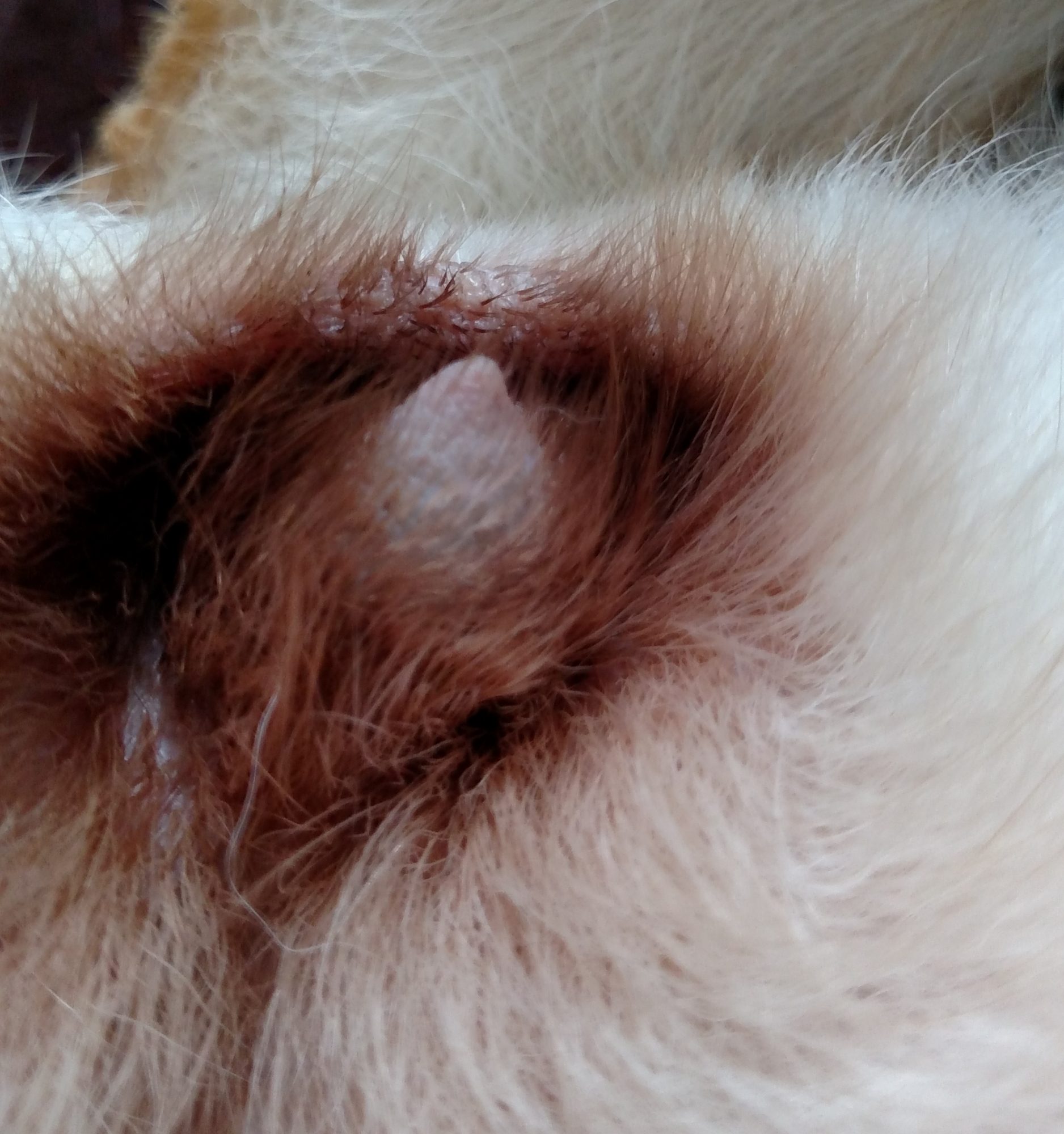
How on earth can an extra skin fold cause bladder infections?
The excess skin forms a pocket where urine gets trapped. The moist, warm and dark environment creates ideal breeding grounds for bacteria. This can cause a foul odor in addition to ongoing infections.
In addition, Bella became very reactive & even aggressive toward the other pets in the household.
Signs of bladder infections may include licking of the vulva, scooting of the back end, bloody urine, urinary incontinence and “accidents” in the house. Other conditions may cause similar signs, so your family vet should eliminate other problems, such as bladder stones and even bladder cancer.
So what is the treatment of this bizarre condition?
- The Band-Aid approach is the “medical” treatment. We treat the symptoms by cleaning the area and giving antibiotics. But we are not treating the cause, so it can be rather frustrating every time the infection comes back.
- The best treatment is surgery. Yes, we can do cosmetic surgery on a dog’s vulva. Call it nip and tuck! Surgery allows removing the excess skin in order to provide better ventilation to the area.
The reconstructive surgery is called a vulvoplasty or episioplasty. The main challenge of the surgery is to remove just the right amount of skin: not too much and not too little.
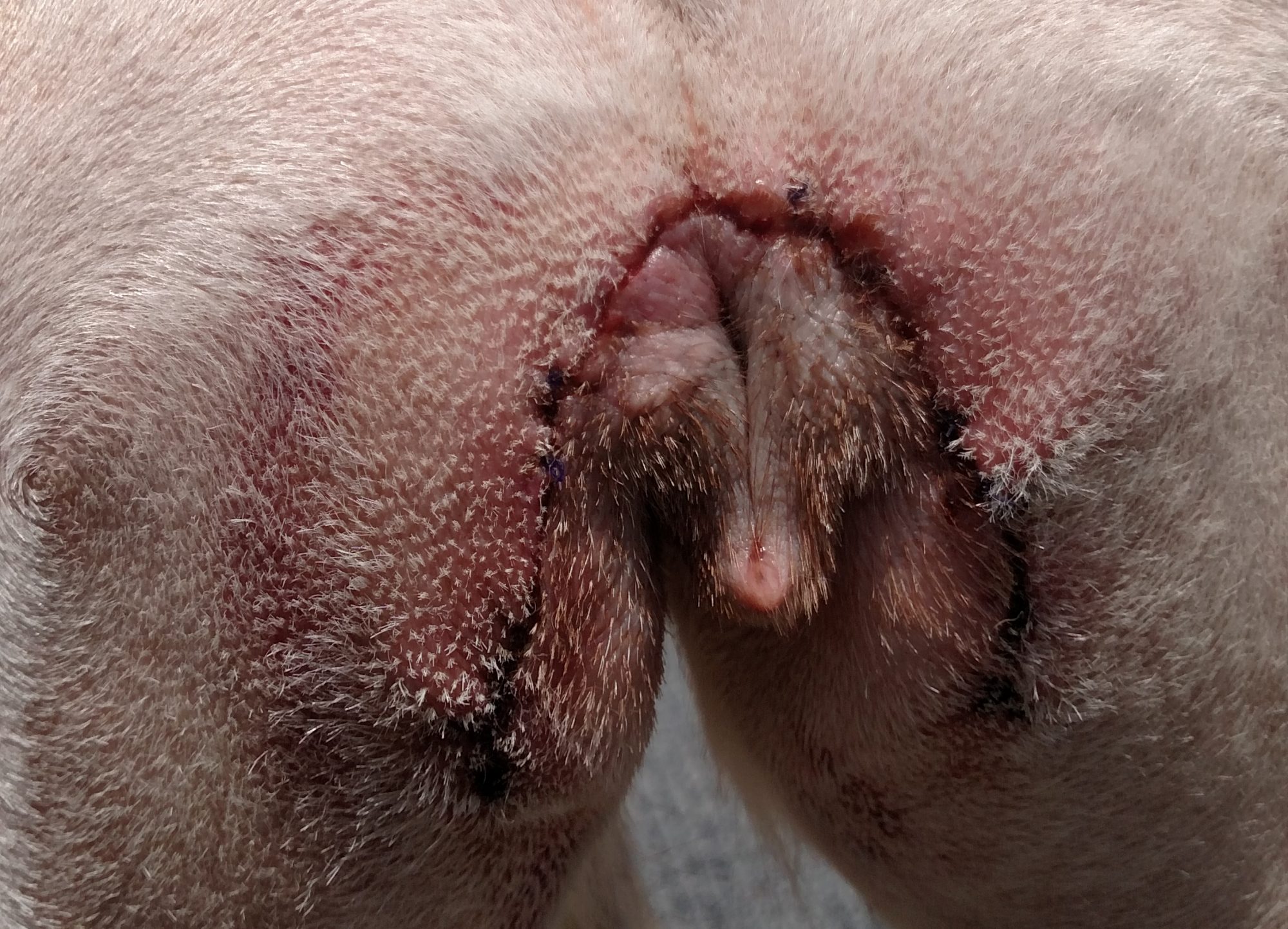
Recovery generally takes 2-3 weeks. I don’t place skin sutures, so there are no stitches to remove in this sensitive area… All stitches are internal and eventually dissolve. An E collar (plastic cone) is critical for the full 2-3 weeks to prevent licking and to protect the incision.
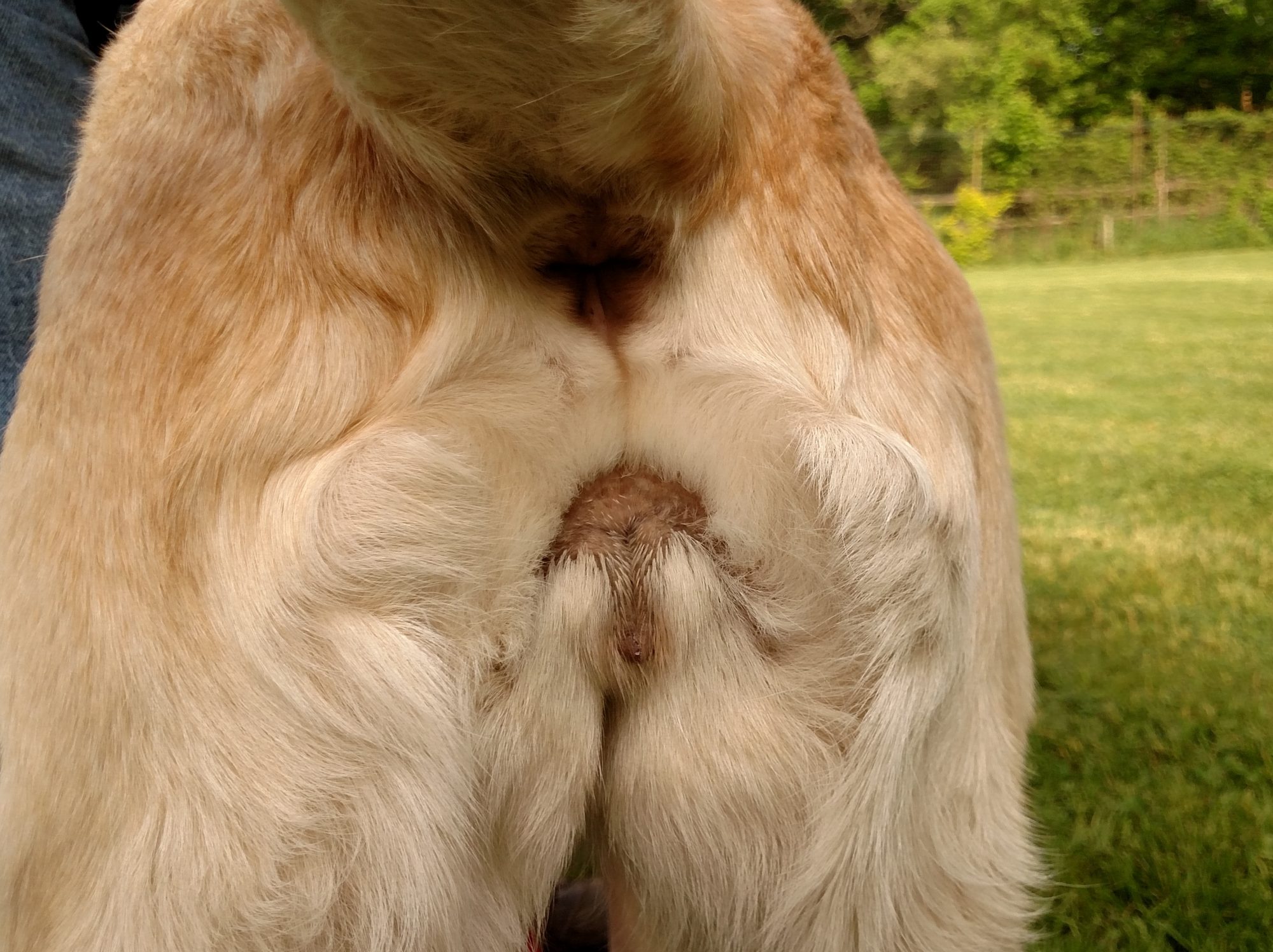
Overall, this is a common yet frustrating condition. Fortunately, surgery is typically successful and pet owners are usually very happy with the end result… as well as their dogs!
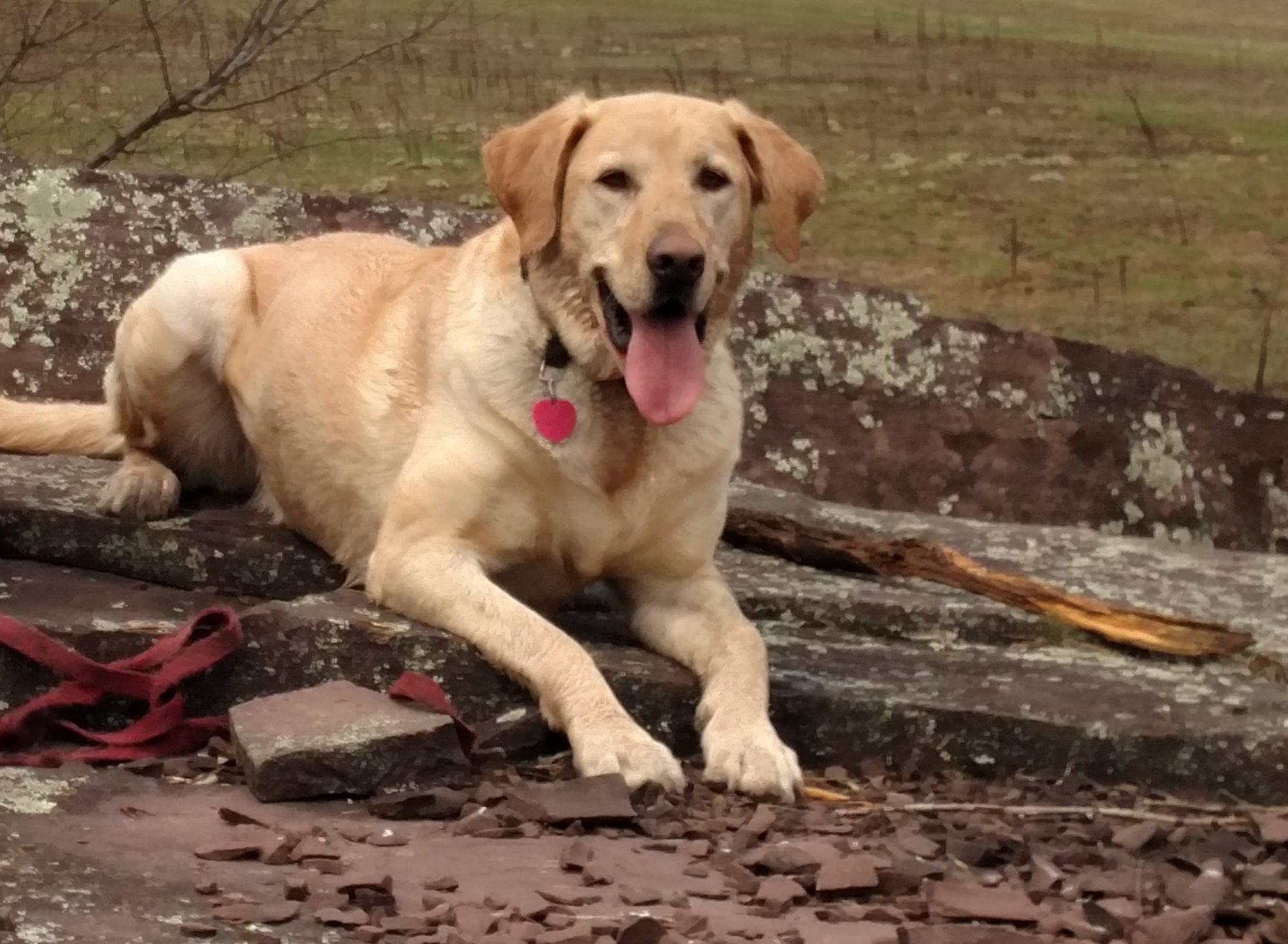
Bella’s owner wrote: “I am ecstatic to say… Bella has not had a bladder infection since surgery!!”
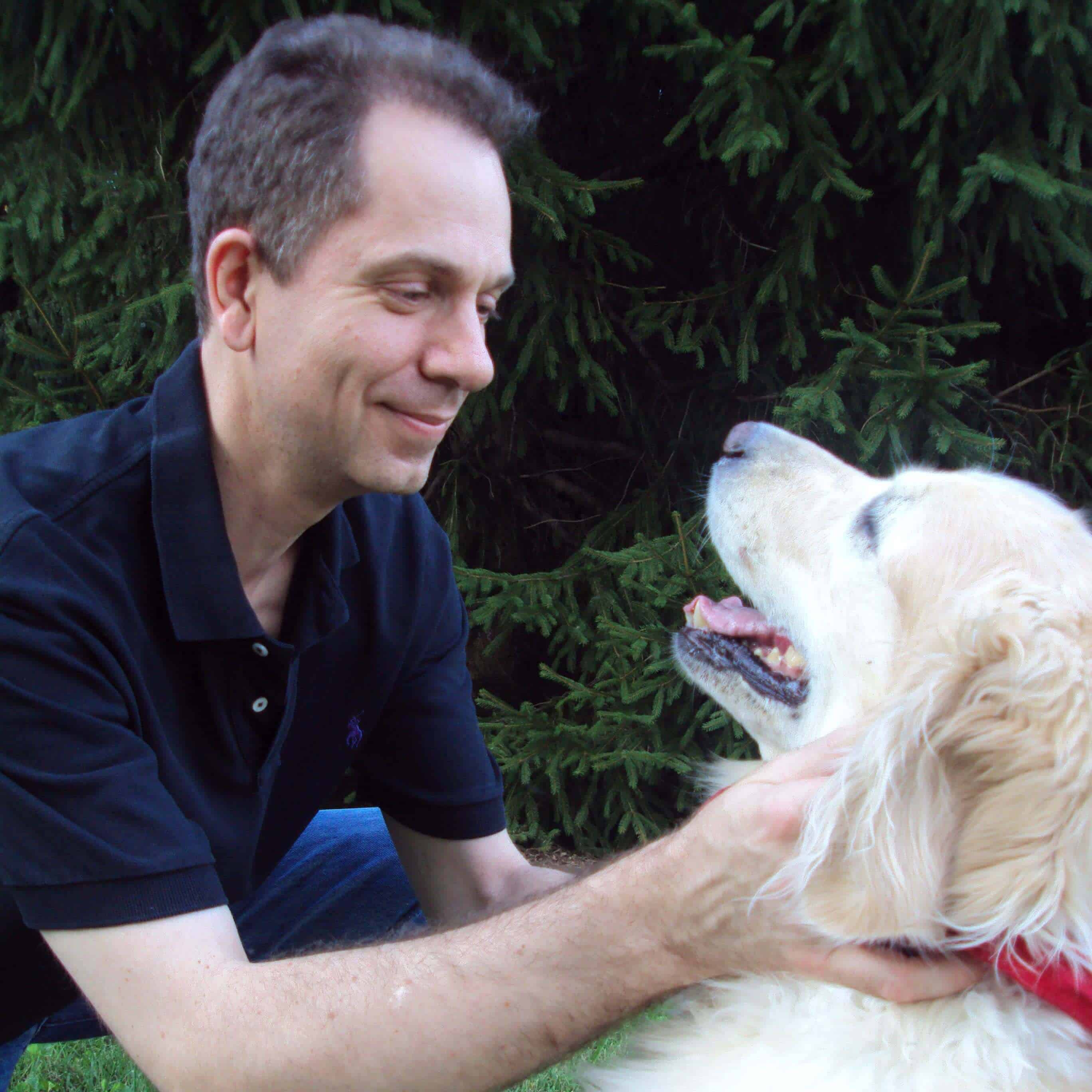
Dr. Phil Zeltzman is a traveling veterinary surgeon in Pennsylvania & New Jersey. An award-winning author, he loves to share his adventures in practice along with information about vet medicine and surgery that can really help your pets. Dr. Zeltzman specializes in orthopedic, neurologic, cancer, and soft tissue surgeries for dogs, cats, and small exotics. By working with local family vets, he offers the best surgical care, safest anesthesia, and utmost pain management to all his patients. Sign up to get an email when he updates his blog, and follow him on Facebook, too!
Look at your dog’s head and predict health problems
The pet insurance branch of Nationwide recently released a report that shows that brachycephalic dogs have a higher risk for several diseases.
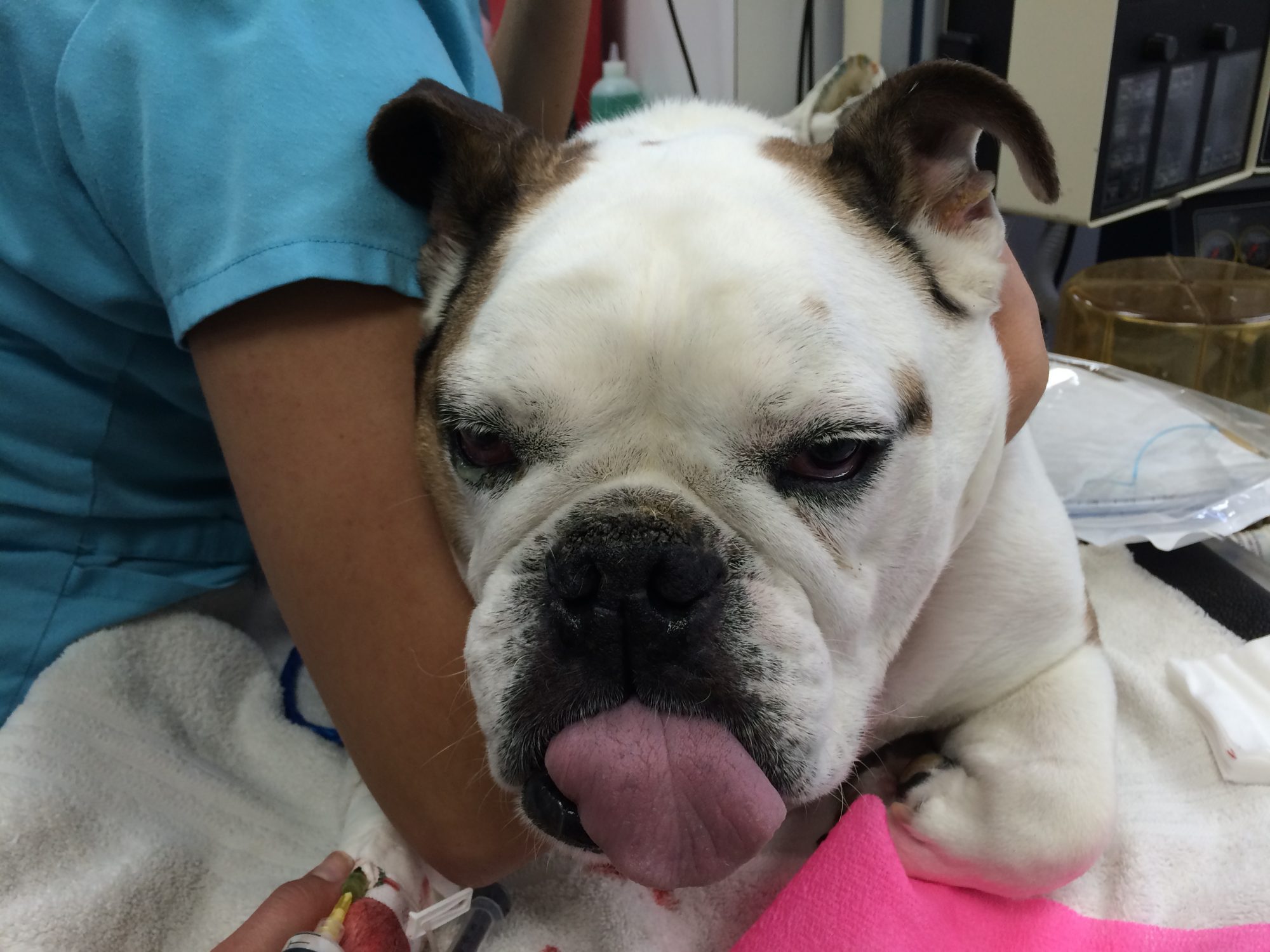
Brachycephalic dogs have a flat face. They tend to have a shorter skull, a shorter snout or muzzle and bulging eyes. Because of the shape of their skull, they often have breathing difficulties.
In an English Bulldog, the poster child for brachycephalic dogs, the nostrils are routinely very small (“stenotic nares”). This limits the flow of oxygen. In addition, a Bulldog can have a soft palate that is too long (the back part of the roof of the mouth), everted laryngeal saccules (small fleshy parts inside the larynx or voice box), and a small wind pipe (trachea). This blocks the flow of oxygen even more, which is why these dogs pant all the time. They are literally suffocating.
The smooshed face also leads to extra skin folds that can become irritated or infected.
The report shows a higher risk for skin diseases and eye problems.
Besides Bulldogs, brachycephalic dog breeds include the Affenpinscher, Boston terrier, boxer, Brussels griffon, old English bulldog, shih tzu, cavalier King Charles spaniel, dogue de Bordeaux, French bulldog, Japanese chin, Lhasa apso, mastiff, Brazilian mastiff, bull mastiff, English mastiff, Neapolitan mastiff, Pyrenean mastiff, Tibetan mastiff, Spanish mastiff, pekinese and pug.
What should you do?
All of these dogs can be wonderful pets, you just need to be aware of the health risks before you adopt them.
So what should you do if your dog has similar problems? The secret to avoid breathing problems later in life is to widen the nostrils as early as possible. Several articles* recommend at 3 to 4 months of age. The challenge is to operate on these dogs before the usual age to spay or neuter a dog. I agree 100% with these articles, early intervention is key.
As to the other issues, mainly skin diseases and eye problems, they are a whole different story. See your vet early on, before the problems go out of control.
Phil Zeltzman, DVM, DACVS, CVJ, Fear Free Certified
* Source: Here is a quote for an article about these patients: “It is recommended to perform rhinoplasty in puppies with this abnormality at 3 to 4 months of age to avoid progression to secondary changes, such as laryngeal collapse or pharyngeal edema.”

Dr. Phil Zeltzman is a traveling veterinary surgeon in Pennsylvania & New Jersey. An award-winning author, he loves to share his adventures in practice along with information about vet medicine and surgery that can really help your pets. Dr. Zeltzman specializes in orthopedic, neurologic, cancer, and soft tissue surgeries for dogs, cats, and small exotics. By working with local family vets, he offers the best surgical care, safest anesthesia, and utmost pain management to all his patients. Sign up to get an email when he updates his blog, and follow him on Facebook, too!
Do you think it’s ethical to put feral cats to work?
Many large cities face an ongoing problem with rodents. For example, if you’ve taken the subway in New York City, you have likely seen a few rats running around.
Same issue in sewers, businesses, docking areas, food and merchandise warehouses, and yes, restaurants!
Another big issue for cities is feral cats. NYC is estimated to have half a million stray cats. Volunteer groups are working all over the country to trap and neuter these cats. In some cases, cats can be relocated.
Cats and rodents typically don’t exactly go along very well…
The simple smell of a cat has been shown to ward off rodents (to be more specific, rats can detect cat pheromones). A recent twist on the trap and neuter concept is to relocate stray cats to areas that have a rodent problem.
To convince the cats to stay in the new location, trained volunteers set up huge dog crates with beds, toys, litter boxes and food. If the new location is a business, the owners must feed the cats twice daily and pay for any needed veterinary care. Once used to the new area, the cats are released and they “take care” of the rodents. This process usually takes about one month.
The alternative until now was to hire expensive pest control services, and they use chemicals. Now, cities like NYC and Chicago use more natural methods.
One success story reported in New York magazine is “Venkman the Cat,” who takes care of rodent at a Chicago brewery. He is a local star and even has his own twitter feed!
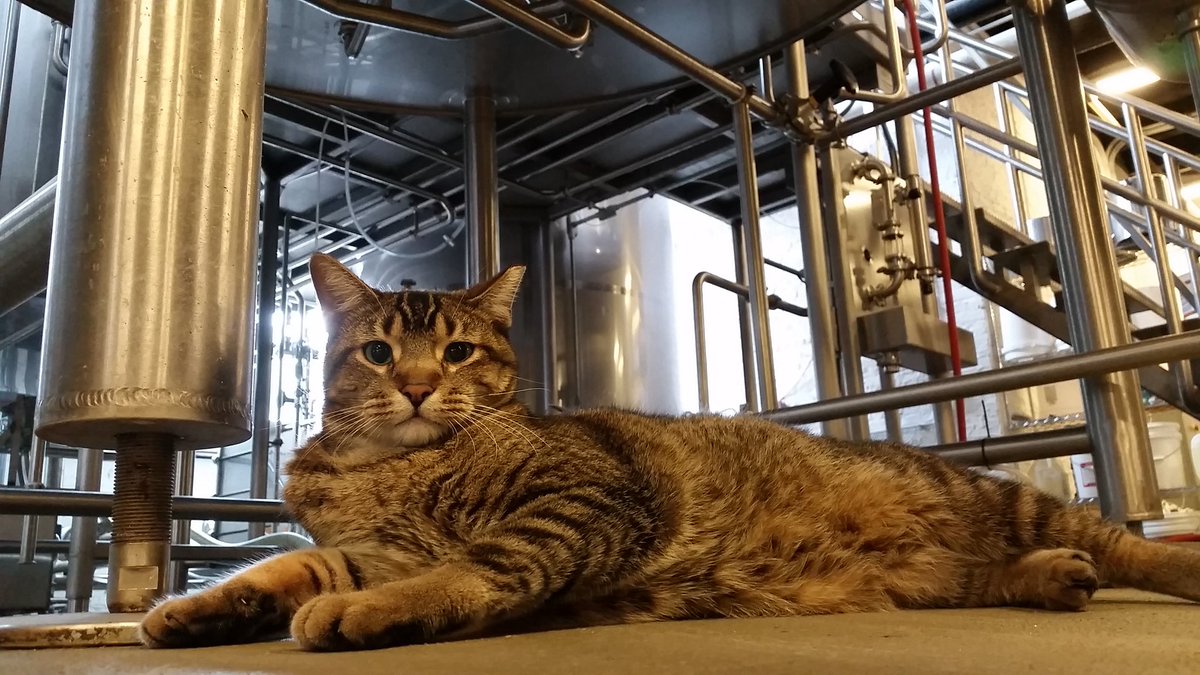
(Source: Chicago’s Empirical Brewery and New York Magazine)
Do you think this is a good idea? Do you think it’s ethical to relocate cat colonies and use them to control the rodent population?
Chime in!

Dr. Phil Zeltzman is a traveling veterinary surgeon in Pennsylvania & New Jersey. An award-winning author, he loves to share his adventures in practice along with information about vet medicine and surgery that can really help your pets. Dr. Zeltzman specializes in orthopedic, neurologic, cancer, and soft tissue surgeries for dogs, cats, and small exotics. By working with local family vets, he offers the best surgical care, safest anesthesia, and utmost pain management to all his patients. Sign up to get an email when he updates his blog, and follow him on Facebook, too!
Jessie’s amazing story of the evil belly mass
Jessie, a 9 year old Border Collie mix, came into Brodheadsville Vet Clinic to have an ugly mass evaluated on her belly (see picture 1).
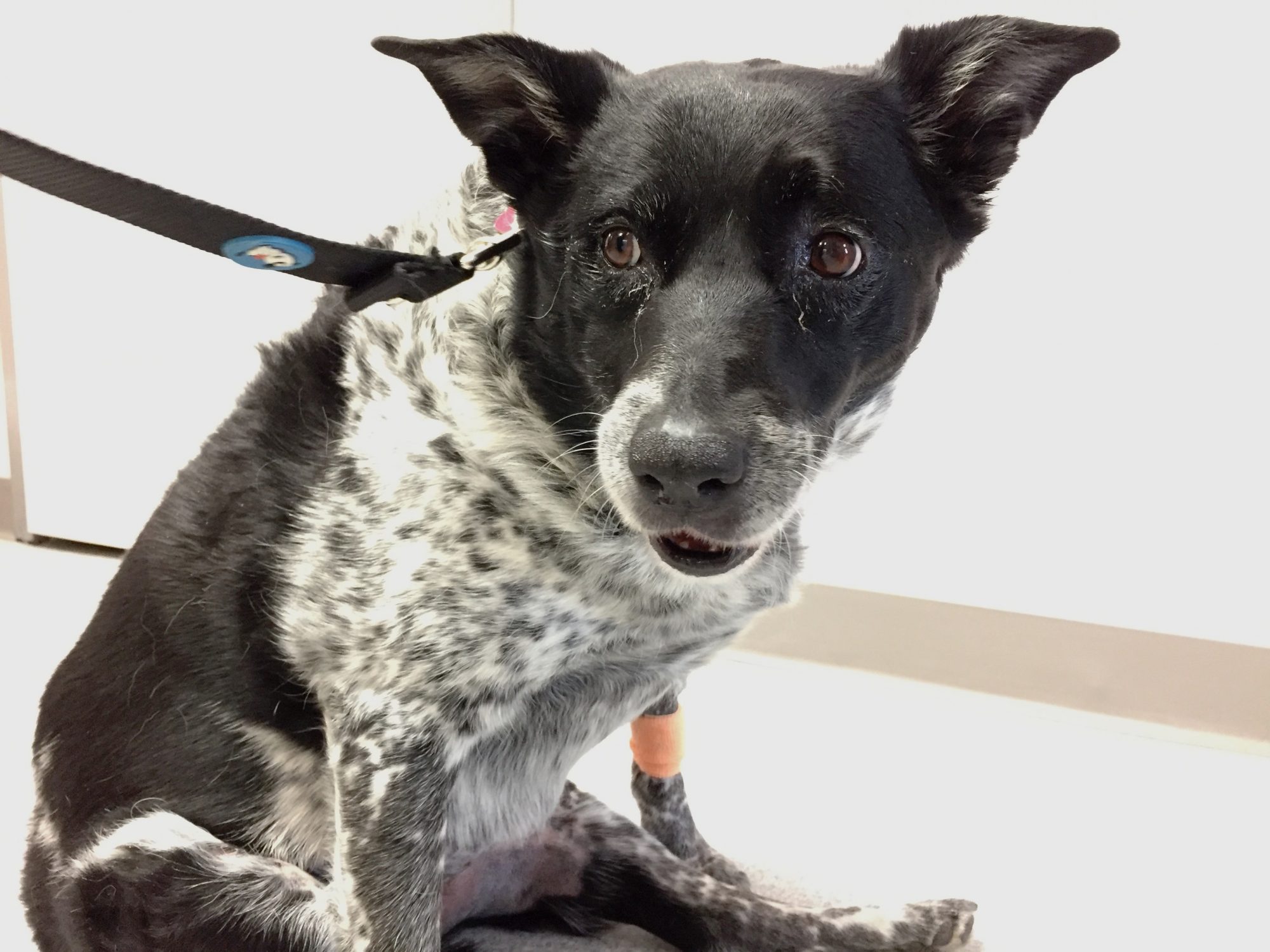
It had appeared a few months prior and grew fairly quickly. It was also starting to look bumpy, oozing and hairless. Jessie’s vet was concerned that it could be cancer due to its appearance and quick growth (see picture 2: compare the size of the mass to the thermometer in her behind).
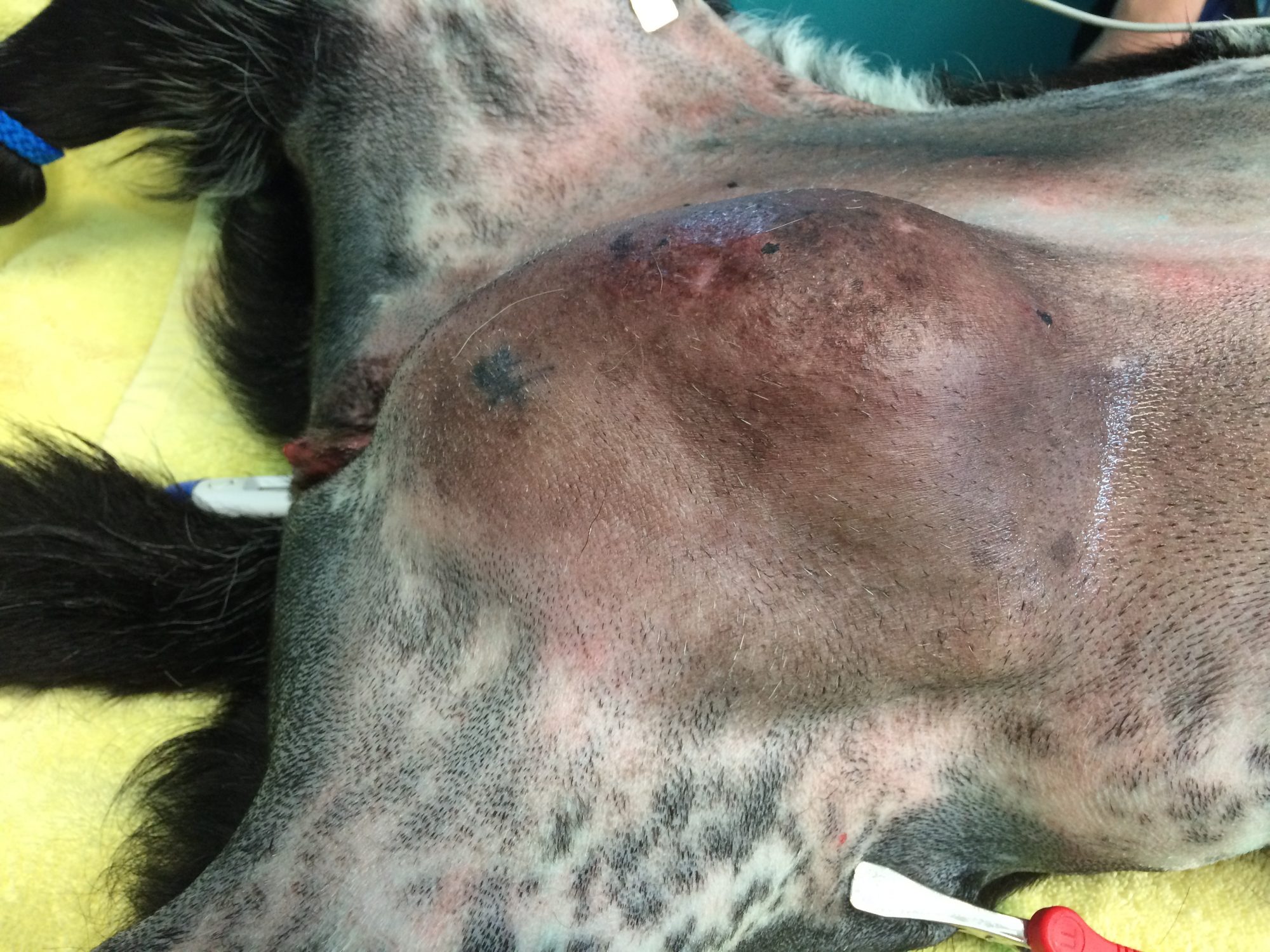
Jessie was scheduled for surgery the following week. The owner was well aware that the mass could be cancerous, but she was ready to do anything for her beloved dog. Chest X-rays did not show any sign of spreading of the tumor to her lungs.
Jessie was put under anesthesia and went to surgery. The mass was about the size of a pineapple. It started just under the skin but it was now actually invading into the wall of the belly! The mass was carefully removed, both from under the skin and from between the muscles (see picture 3 – the coin is a quarter).
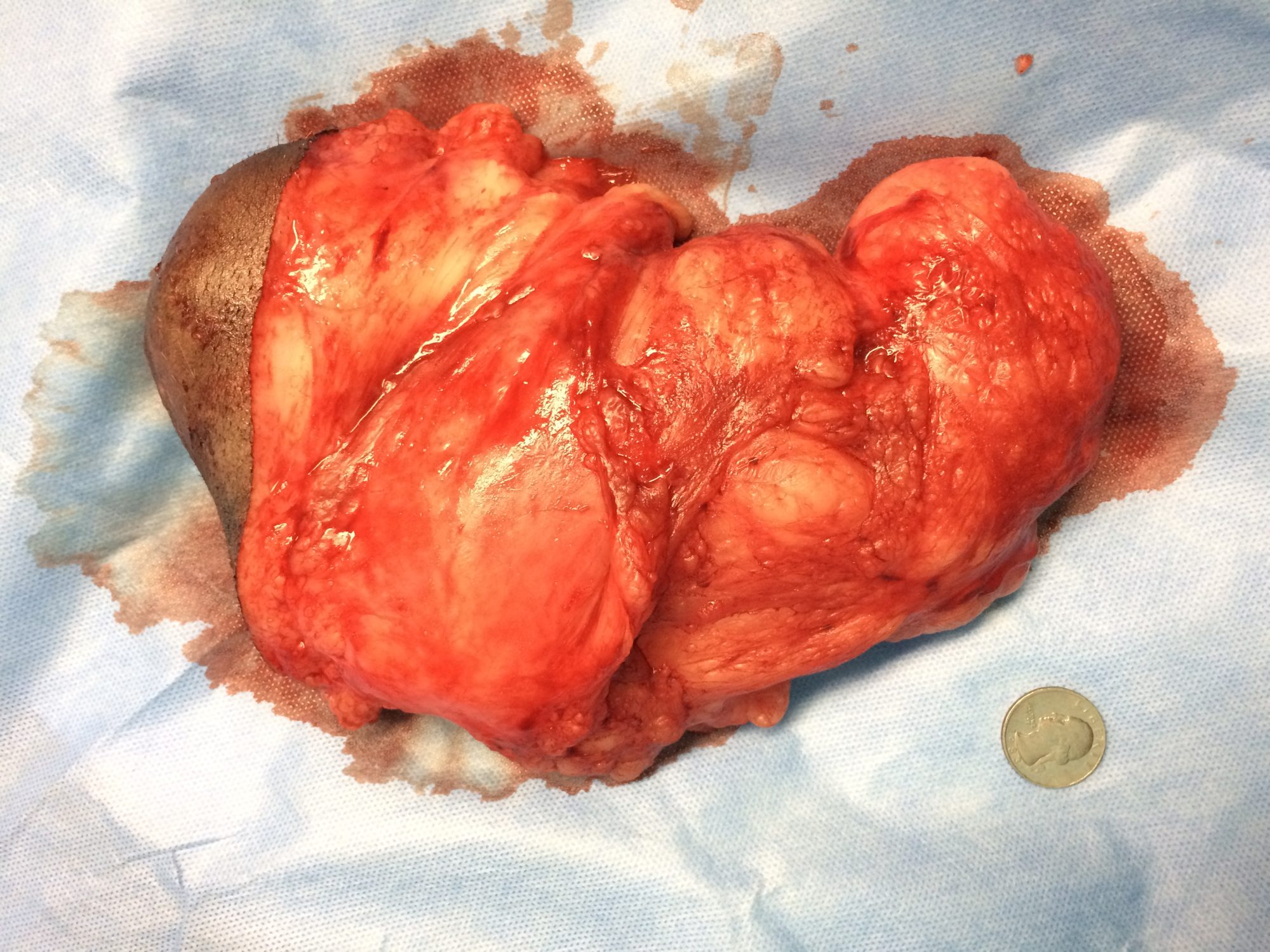
Everything was stitched up and Jessie was recovered from anesthesia (see picture 4).
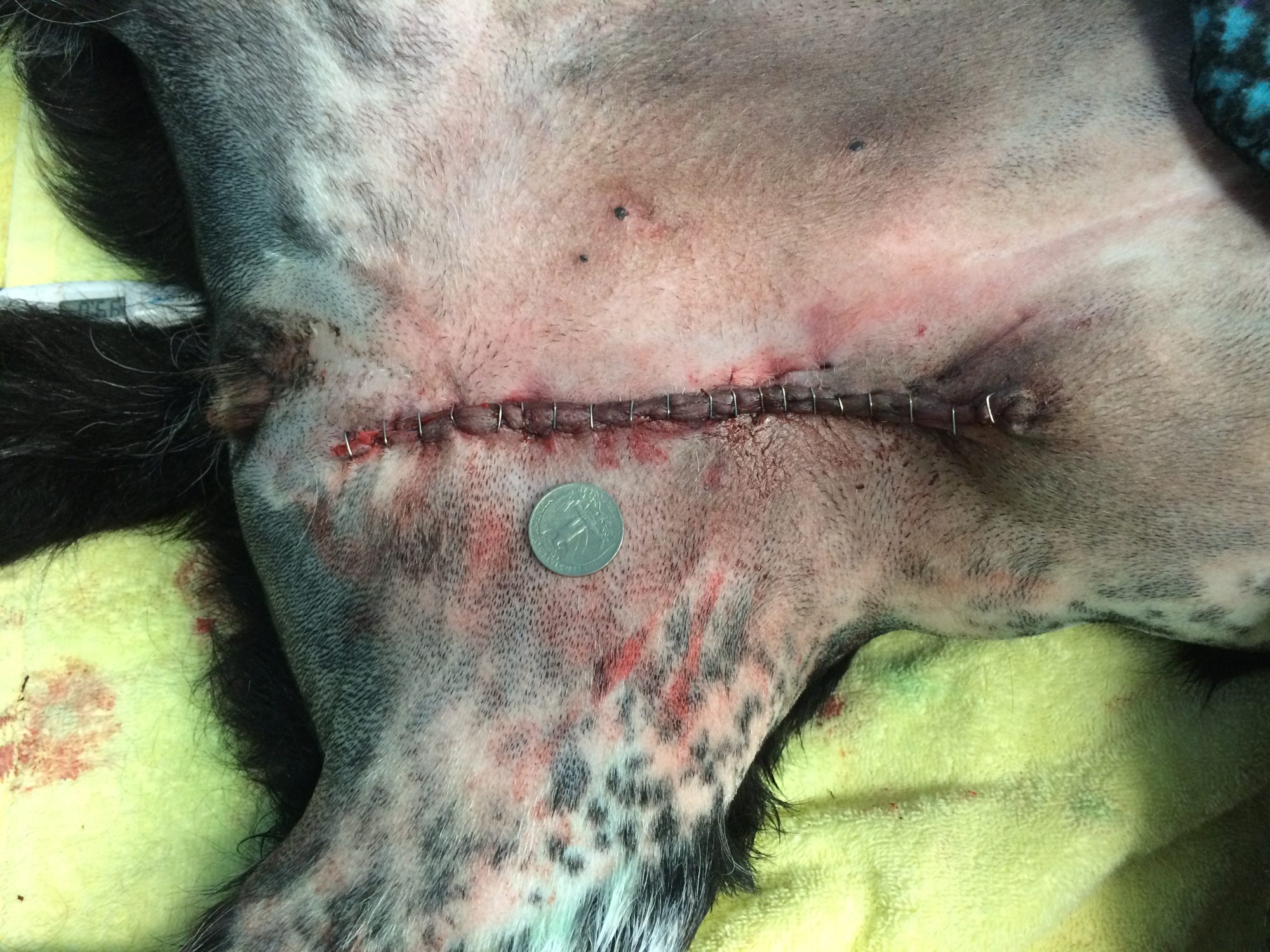
She was sent home with an E collar (plastic cone) to prevent her from licking the incision. She received antibiotics and pain medications for a week. The mass was sent to the lab for biopsy. After about a week, the results came back. Amazingly, the mass was not cancerous! It was a benign, fatty tumor called a lipoma!
Jessie’s owner was thrilled and relieved. By then Jessie was walking and feeling great, enjoying her new life without a big mass interfering with her walking.
Moral of the story: just because a mass looks “ugly” and grows quickly doesn’t necessarily mean that it’s cancer.

Dr. Phil Zeltzman is a traveling veterinary surgeon in Pennsylvania & New Jersey. An award-winning author, he loves to share his adventures in practice along with information about vet medicine and surgery that can really help your pets. Dr. Zeltzman specializes in orthopedic, neurologic, cancer, and soft tissue surgeries for dogs, cats, and small exotics. By working with local family vets, he offers the best surgical care, safest anesthesia, and utmost pain management to all his patients. Sign up to get an email when he updates his blog, and follow him on Facebook, too!
Why Was Willow Suffocating?
Willow, a sweet 18 month old cat (see picture), had been battling repeated upper respiratory infections ever since she was a kitten. Antibiotics helped for a while, but the infections kept coming back. Her breathing started to sound noisier. Breathing became harder and harder. Until she was suffocating.
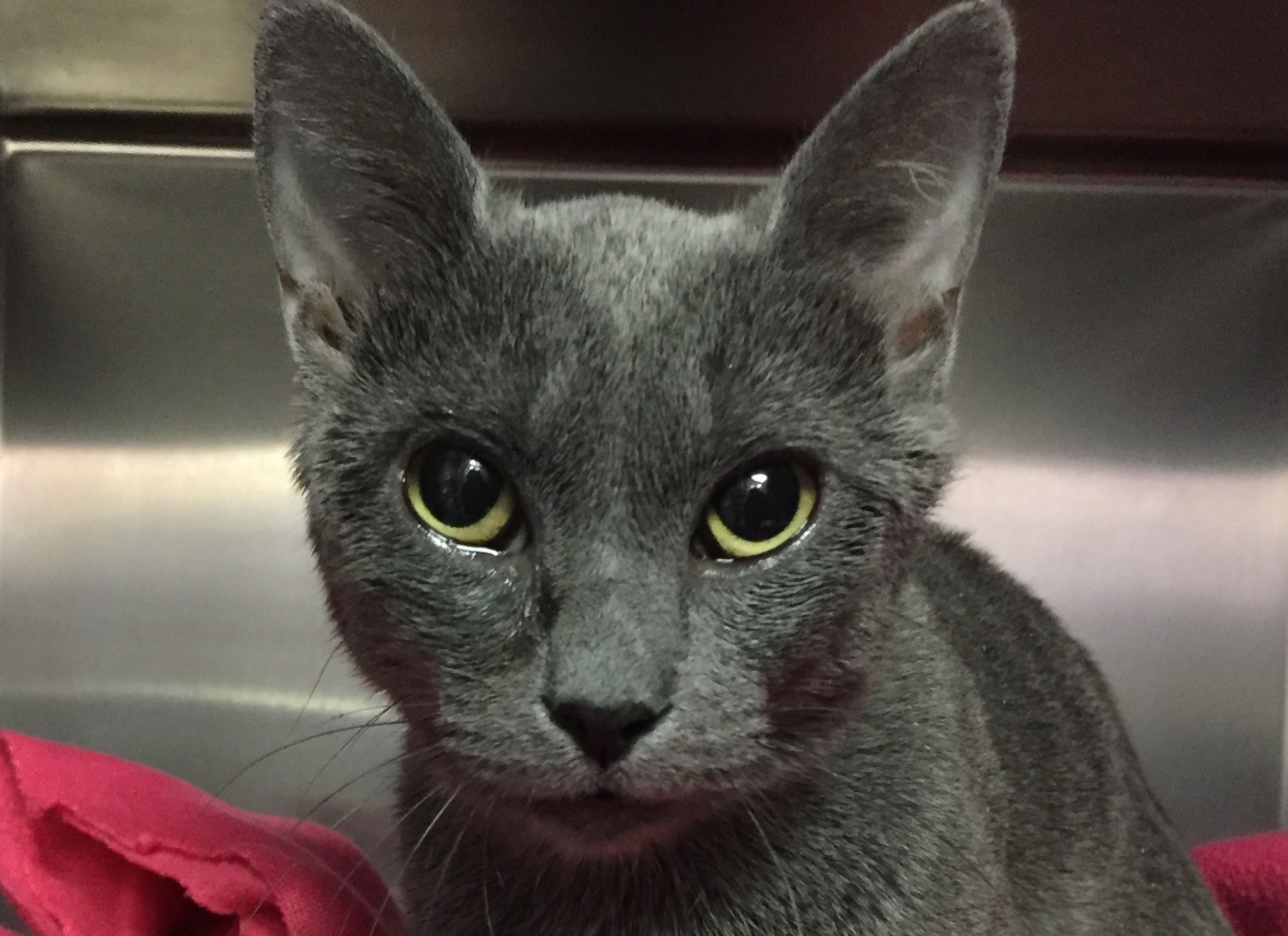
When I was called by Brodheadsville Vet Clinic to examine Willow, I suspected that she had developed a polyp. A polyp is a benign tumor that can grow in a cat’s mouth (or ear) because of ongoing irritation or inflammation. It can be tricky to see when it’s in the mouth, because it grows over the roof of the mouth, aka the soft palate.
Under sedation, I pulled her soft palate forward and sure enough, we found a huge mass (see video if you think you can stomach it!!!). I gently removed the mass. Willow was carefully monitored for bleeding and difficulty breathing.
The mass was sent to the lab to confirm the diagnosis (see picture). She recovered smoothly from sedation and went home with a few days of pain medication. She was also prescribed some cortisone to hopefully prevent the polyp from coming back.
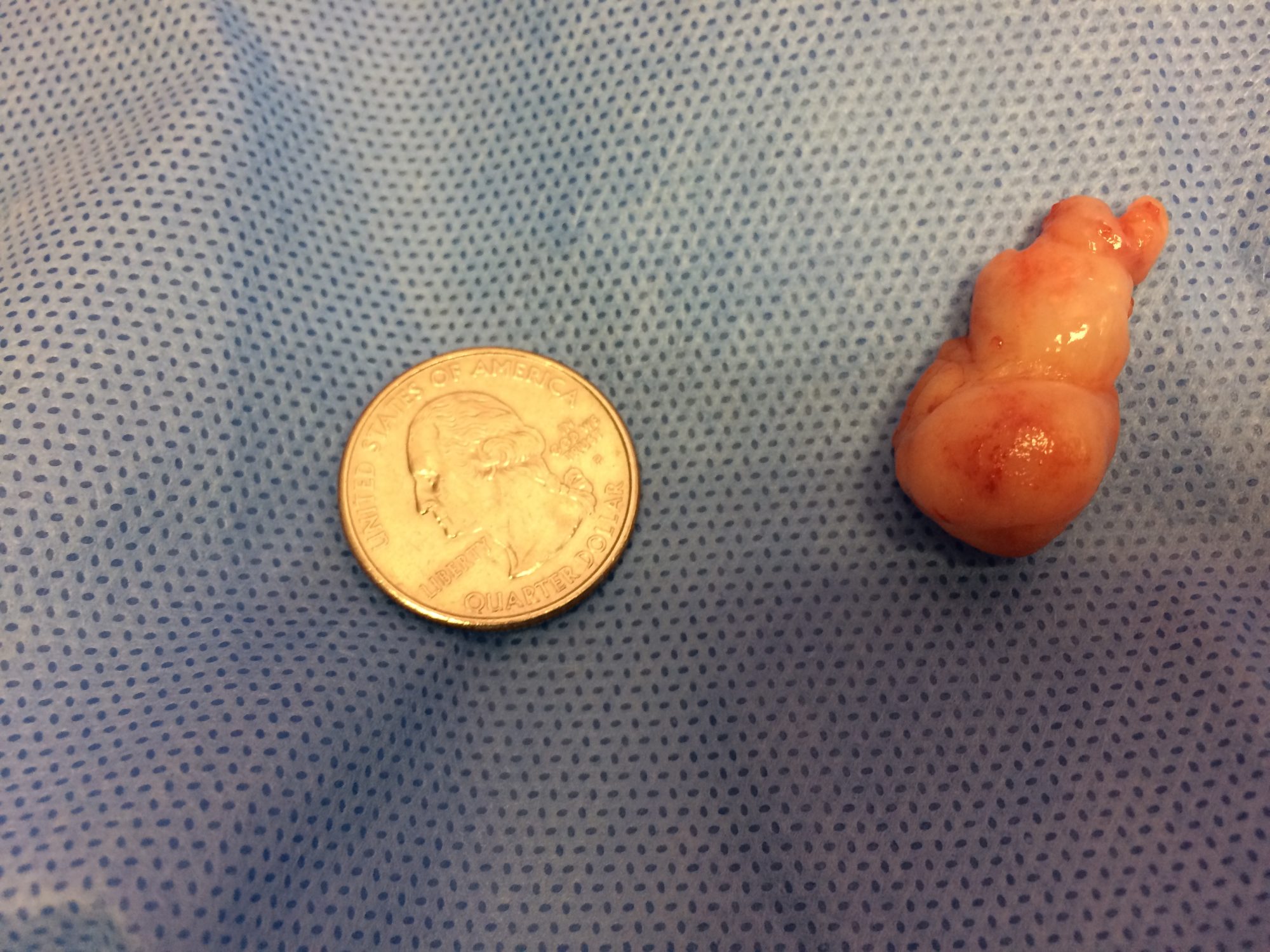
One week later, the biopsy confirmed that the mass was a benign nasopharyngeal polyp. By then, Willow was feeling great and was thrilled to be able to breathe normally!

Dr. Phil Zeltzman is a traveling veterinary surgeon in Pennsylvania & New Jersey. An award-winning author, he loves to share his adventures in practice along with information about vet medicine and surgery that can really help your pets. Dr. Zeltzman specializes in orthopedic, neurologic, cancer, and soft tissue surgeries for dogs, cats, and small exotics. By working with local family vets, he offers the best surgical care, safest anesthesia, and utmost pain management to all his patients. Sign up to get an email when he updates his blog, and follow him on Facebook, too!

